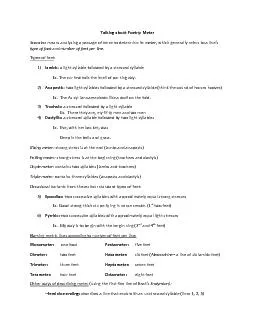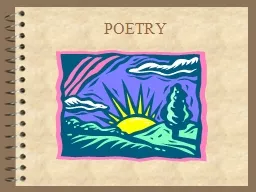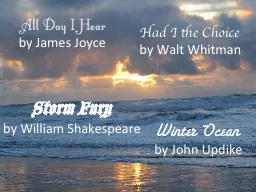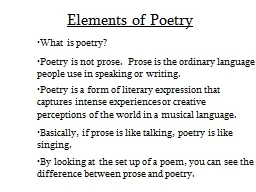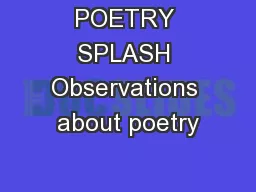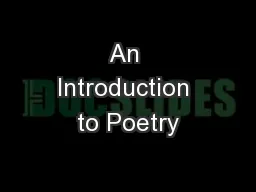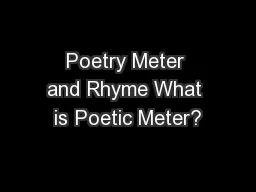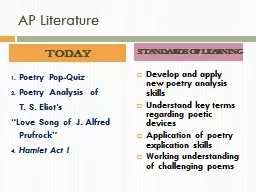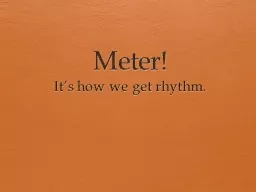PDF-Talking about Poetry: Meter
Author : karlyn-bohler | Published Date : 2015-10-17
Scansion means analyzing a passage of verse to determine its meter which generally refers to a linex2019s type of foot and number of feet per line Types of feet 1 Iambic
Presentation Embed Code
Download Presentation
Download Presentation The PPT/PDF document "Talking about Poetry: Meter" is the property of its rightful owner. Permission is granted to download and print the materials on this website for personal, non-commercial use only, and to display it on your personal computer provided you do not modify the materials and that you retain all copyright notices contained in the materials. By downloading content from our website, you accept the terms of this agreement.
Talking about Poetry: Meter: Transcript
Download Rules Of Document
"Talking about Poetry: Meter"The content belongs to its owner. You may download and print it for personal use, without modification, and keep all copyright notices. By downloading, you agree to these terms.
Related Documents

